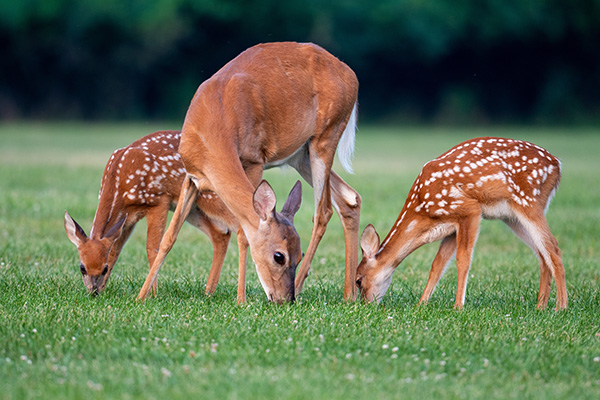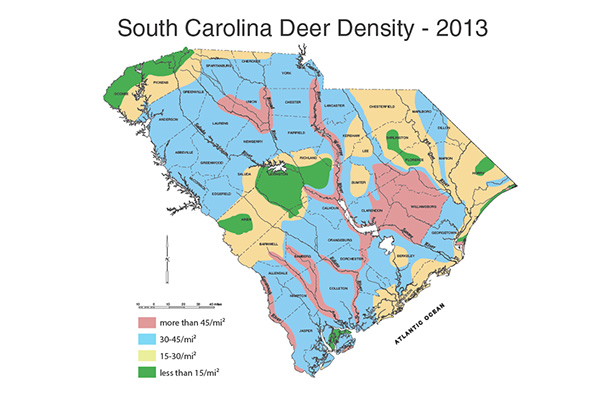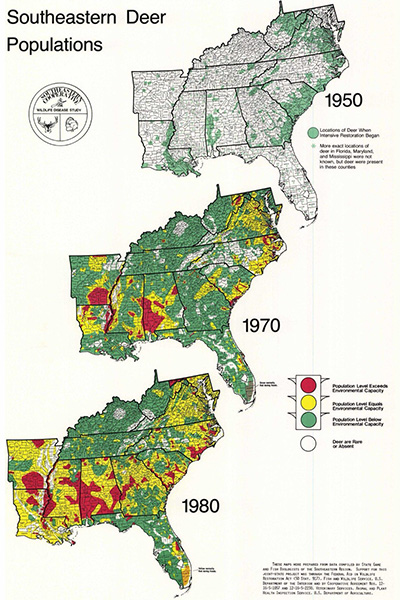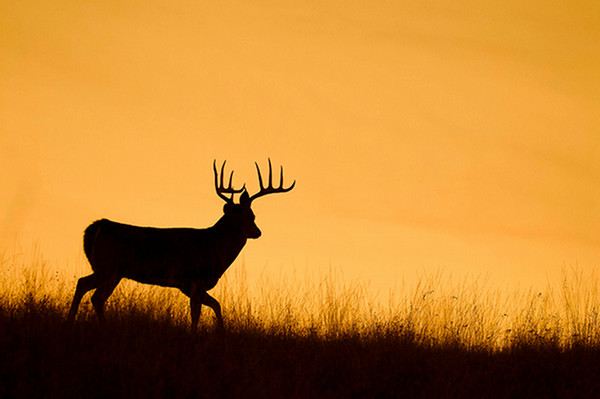Overview
White-tailed deer are a medium sized mammal that can be found throughout much of the United States. They sport a red-brown coat with a white underbelly during the summer months that becomes gray in the winter. White-tailed deer are named for their large, white tail that they can hold up in the air when alarmed. Males are known as bucks and females are known as does. They can be distinguished from one another by the antlers males have on their heads for much of the year. Bucks will lose the antlers every year around January or February. They begin to grow them back every year and the antlers are encased in “velvet” as they grow. They then shed their velvet, exposing the hardened bone underneath. Bucks are typically larger than does.

White-tailed deer on forest edge (Photo by Adobe Stock)
White-tailed deer will reproduce during a period called the “rut”. One buck can breed with many does during this time period. In the late spring, does will give birth to offspring known as fawns. They typically give birth to twins but will also give birth to triplets occasionally. White-tailed deer fawns have spots upon birth that they begin to lose over time. Does will hide their fawns in shrubs and grasses for the first few weeks of their life since they are more vulnerable during that time. When they are large enough, fawns will accompany their mother until they reach adulthood. White-tailed deer does form herds that disperse when they begin to give birth. Bucks will form small bachelor groups once the rut is over.
White-tailed deer are herbivores, meaning they mainly feed on plant material. They spend much of their time browsing on vegetation such as shrubs, but they also feed on weeds and grasses. White tailed deer readily feed on acorns. Their plant-based diet means they will also feed on row crops, such as corn and soybeans, which can lead to large economic losses to farmers. White-tailed deer are sometimes considered a nuisance in residential areas due to their attraction to some ornamental plants.

Doe and two fawns grazing (Photo by AdobeStock)



